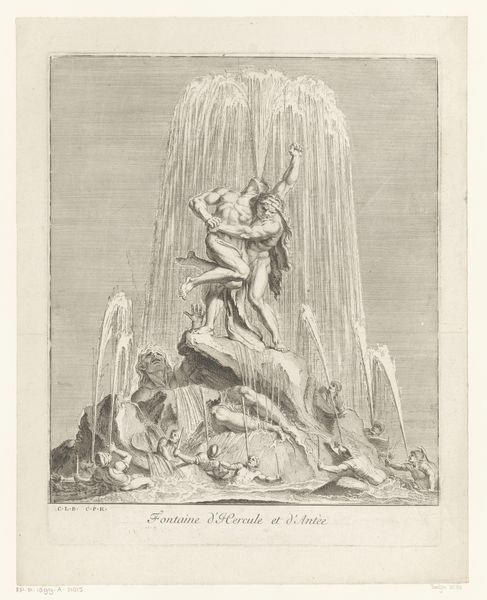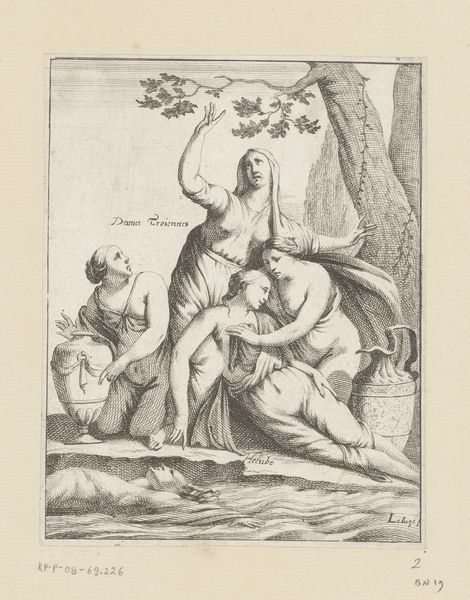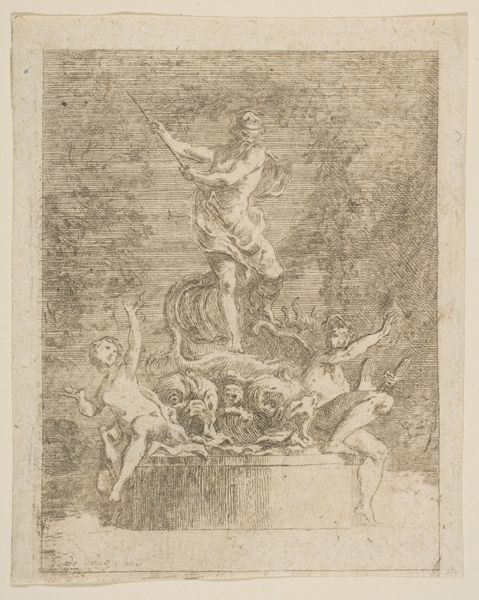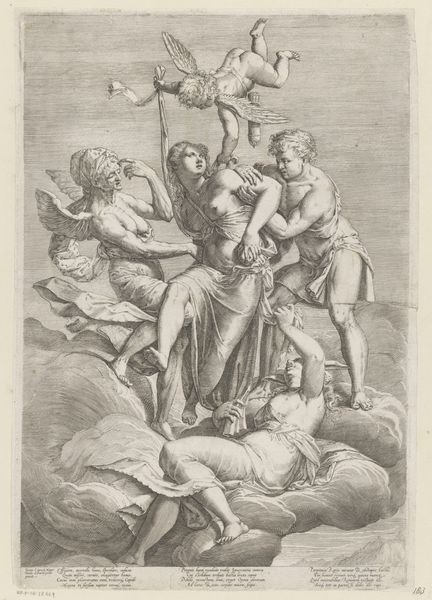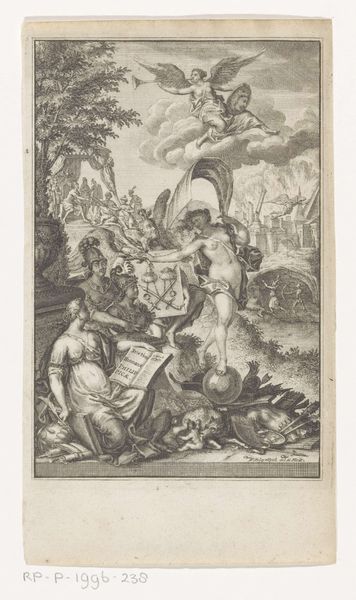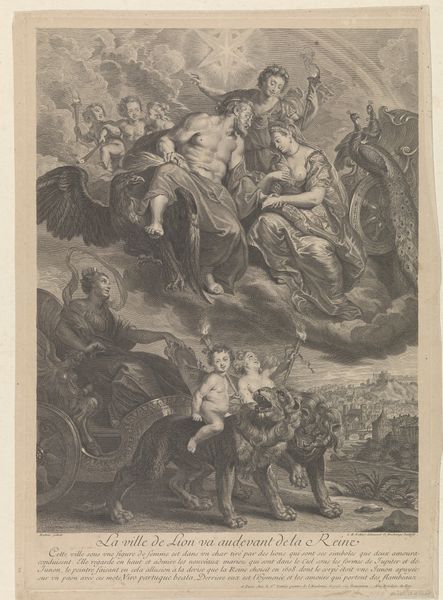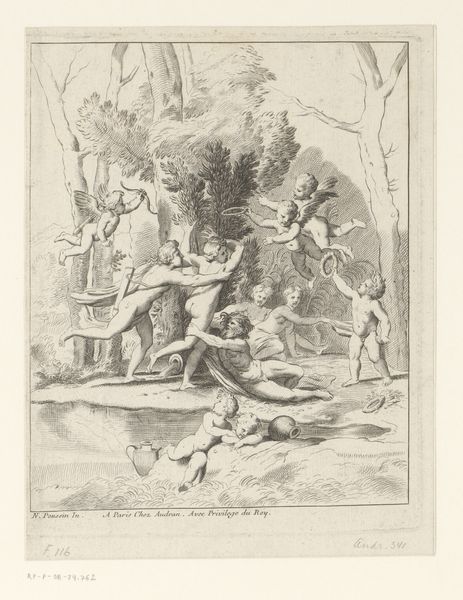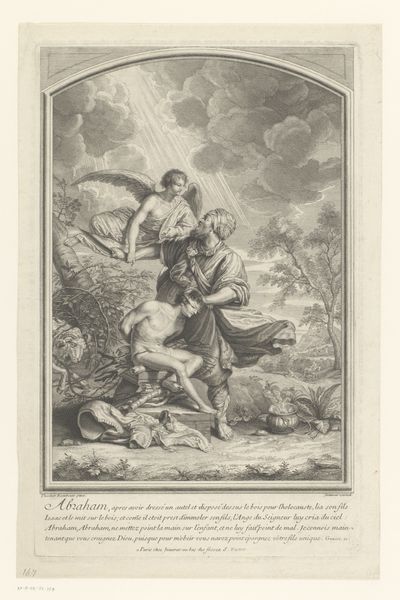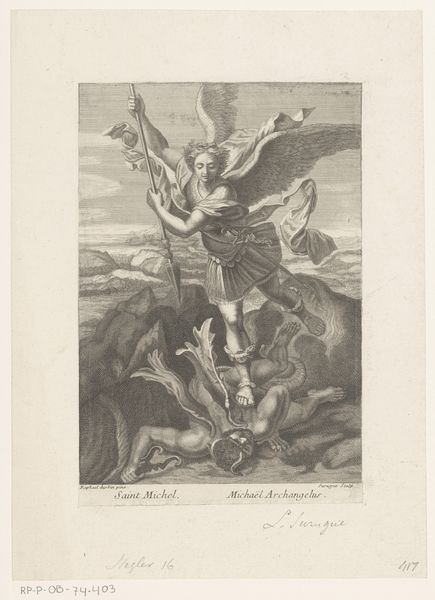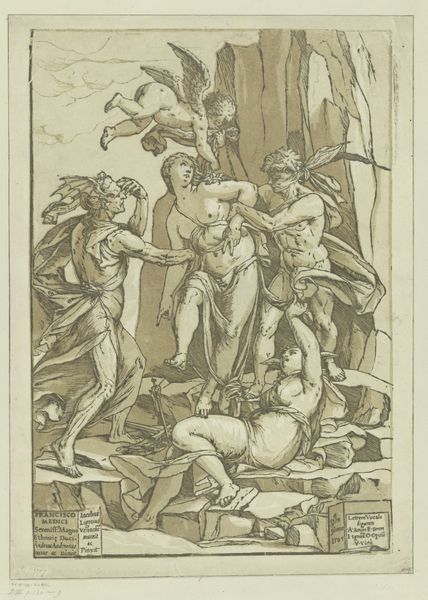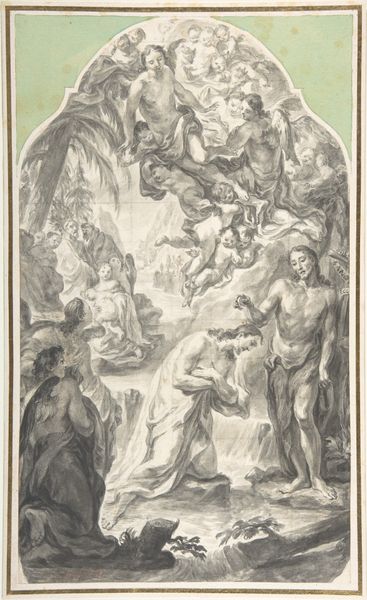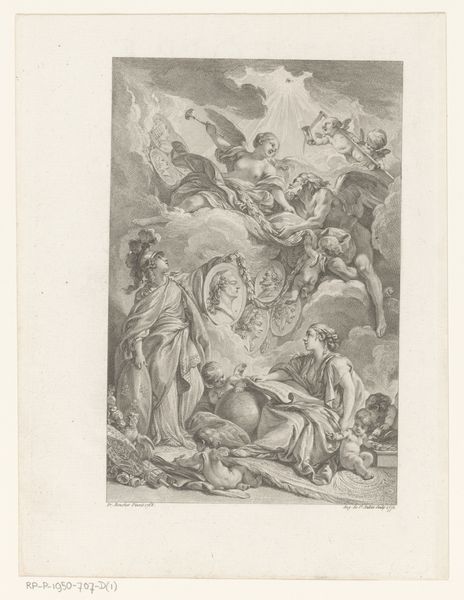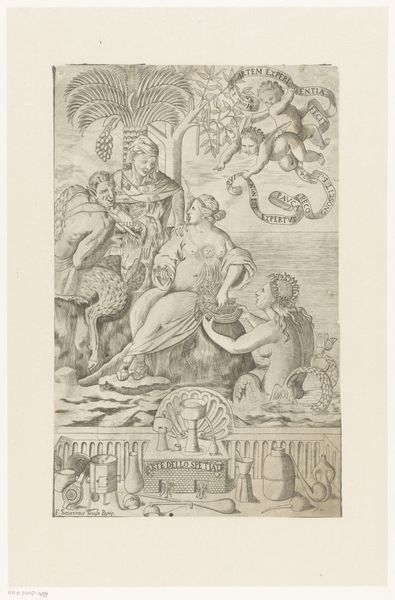
engraving
#
baroque
#
old engraving style
#
landscape
#
figuration
#
history-painting
#
engraving
Dimensions: height 360 mm, width 287 mm
Copyright: Rijks Museum: Open Domain
Editor: Here we have Louis de Châtillon's "Fontein met Apollo en Daphne," an engraving created between 1672 and 1686. It’s amazing how much movement he captured with simple lines. It’s incredibly Baroque, what can you tell us about this piece? Curator: Considering its Baroque style, this engraving reflects the cultural obsession of the era with grandeur, drama, and elaborate spectacle, perfectly manifested here by a fountain based on the myth of Apollo and Daphne. Water wasn't just water; it was a statement of power and control over nature, especially during Louis XIV's reign. Doesn't the very choice of subject matter tell you about the prevailing ideas around love, transformation, and divine intervention? Editor: Definitely, the transformation aspect comes through strongly, especially with Daphne’s reaching arms and the water resembling rising branches! But how does it relate to its potential display context in, say, a museum then? Curator: Excellent point! The display and interpretation of this engraving shape its contemporary significance. Originally designed possibly as a garden design proposal, a museum today emphasizes its artistic merit but also its historical value in reflecting societal values and royal agendas of 17th-century Europe. Does that make sense? Editor: Yes! It adds another layer to the piece knowing it was possibly a design idea. How did it circulate then, reaching its public? Curator: Prints like this were crucial for disseminating ideas about art, design, and even political ideology throughout Europe. They were the Instagram of their time, influencing taste and spreading trends. Did you notice how precisely rendered this artwork is? Editor: I did notice the details! Seeing it in this historical and cultural context changes my perspective. Now, the fountain seems less about a mythological tale and more about royal power and spreading cultural ideas. Curator: Precisely. It's about how art becomes a vehicle for expressing and reinforcing dominant narratives within a specific cultural and political milieu. Think of the power held by royalty during the Baroque era and how something like this might act as propaganda. Editor: So much to consider! I never thought about engravings in that way, almost like the social media of the 17th century.
Comments
No comments
Be the first to comment and join the conversation on the ultimate creative platform.
